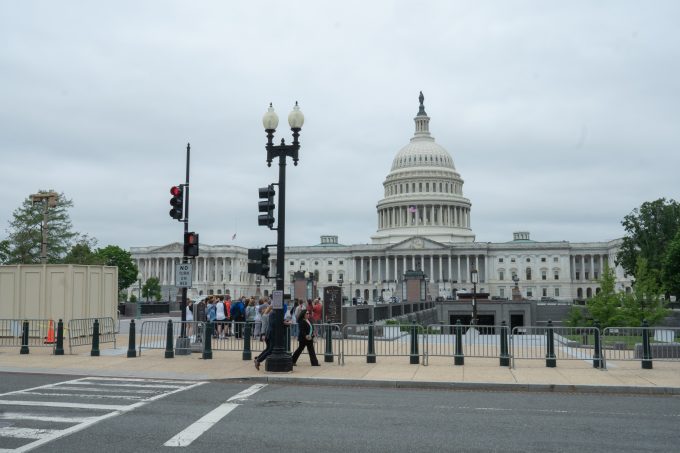Regulatory negotiations surrounding a major U.S. crypto-market-structure bill entered a heightened phase today, as industry executives met with lawmakers amid leaked proposals that sparked public outcry and confusion over DeFi-sector oversight. The timing dovetails with broader macro stress in digital-asset flows and intensifies uncertainty for institutional crypto investors.
Market Reaction
Following media reports of the intense behind-the-scenes negotiations, Bitcoin’s implied volatility spiked by approximately 8 % in the last 24 hours, while open interest in major Bitcoin futures contracts declined by an estimated 6 %, according to CFTC-cleared exchange data. Altcoins such as Solana and Polygon also saw outflows of about 2-3 % of supply on major exchanges. These moves reflect caution among traders as the regulatory spectre looms large. For institutions, the drag comes from not just macro variables but now regulatory-policy risk — a factor that may prompt portfolio de-risking or hedging of crypto holdings until clarity emerges.
Regulatory/Technical Implications
The core dispute centres on leaked legislative language that would impose mandatory “permissioned” structure requirements on the decentralised finance (DeFi) ecosystem, plus enhanced know-your-customer and anti-money-laundering (AML) obligations for protocols and users alike. Industry participants warn that overly broad rules could undermine innovation and liquidity in DeFi, while lawmakers argue that regulators have lacked clarity and consumer protection remains weak. The friction highlights an evolving theme: crypto regulation moving from optional oversight to a full-blown restructuring of legal frameworks. For institutional players—particularly those in Israel and Europe—they must now monitor how bills share jurisdiction between the SEC, CFTC and state regulators, and how compliance burdens may shift operational dynamics and cost structures.
Investor Sentiment and Strategic Perspective
Investor sentiment has swung from opportunistic to cautious. On-chain metrics show large wallets reducing leverage over the past 48 hours by roughly 12 %, while stablecoin deposits into exchanges grew by about 5 % — signals that suggest market participants are parking into liquidity rather than chasing upside. For professional crypto funds and institutions, this means the current regulatory moment is not simply a legal matter but a strategic pivot: how to align exposures, counterparties and risk-governance frameworks under the looming regime. The psychological shift is from “growth-oriented risk-taking” to “survival-oriented structural diligence.”
Looking ahead, market participants should focus on whether the bill will secure bipartisan consensus and how fast it will move through committee stages. Key risk triggers include regulatory fragmentation between federal and state layers, potential DeFi clamp-downs, and dramatic shifts in stablecoin regime structure. Opportunities may surface for firms that adapt early with compliance and governance-ready models. Until clarity arrives, policy-risk, legal-risk and execution-risk remain elevated in digital assets.













Leave a comment